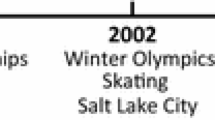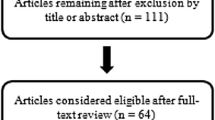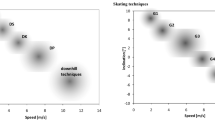Abstract
Background
Alpine ski racing is a popular international winter sport that is complex and challenging from physical, technical, and tactical perspectives. Despite the vast amount of scientific literature focusing on this sport, including topical reviews on physiology, ski-snow friction, and injuries, no review has yet addressed the biomechanics of elite alpine ski racers and which factors influence performance. In World Cup events, winning margins are often mere fractions of a second and biomechanics may well be a determining factor in podium place finishes.
Objective
The aim of this paper was to systematically review the scientific literature to identify the biomechanical factors that influence the performance of elite alpine ski racers, with an emphasis on slalom, giant slalom, super-G, and downhill events.
Methods
Four electronic databases were searched using relevant medical subject headings and key words, with an additional manual search of reference lists, relevant journals, and key authors in the field. Articles were included if they addressed human biomechanics, elite alpine skiing, and performance. Only original research articles published in peer-reviewed journals and in the English language were reviewed. Articles that focused on skiing disciplines other than the four of primary interest were excluded (e.g., mogul, ski-cross and freestyle skiing). The articles subsequently included for review were quality assessed using a modified version of a validated quality assessment checklist. Data on the study population, design, location, and findings relating biomechanics to performance in alpine ski racers were extracted from each article using a standard data extraction form.
Results
A total of 12 articles met the inclusion criteria, were reviewed, and scored an average of 69 ± 13 % (range 40–89 %) upon quality assessment. Five of the studies focused on giant slalom, four on slalom, and three on downhill disciplines, although these latter three articles were also relevant to super-G events. Investigations on speed skiing (i.e., downhill and super-G) primarily examined the effect of aerodynamic drag on performance, whereas the others examined turn characteristics, energetic principles, technical and tactical skills, and individual traits of high-performing skiers. The range of biomechanical factors reported to influence performance included energy dissipation and conservation, aerodynamic drag and frictional forces, ground reaction force, turn radius, and trajectory of the skis and/or centre of mass. The biomechanical differences between turn techniques, inter-dependency of turns, and abilities of individuals were also identified as influential factors in skiing performance. In the case of slalom and giant slalom events, performance could be enhanced by steering the skis in such a manner to reduce the ski-snow friction and thereby energy dissipated. This was accomplished by earlier initiation of turns, longer path length and trajectory, earlier and smoother application of ground reaction forces, and carving (rather than skidding). During speed skiing, minimizing the exposed frontal area and positioning the arms close to the body were shown to reduce the energy loss due to aerodynamic drag and thereby decrease run times. In actual races, a consistently good performance (i.e., fast time) on different sections of the course, terrains, and snow conditions was a characteristic feature of winners during technical events because these skiers could maximize gains from their individual strengths and minimize losses from their respective weaknesses.
Limitations
Most of the articles reviewed were limited to investigating a relatively small sample size, which is a usual limitation in research on elite athletes. Of further concern was the low number of females studied, representing less than 4 % of all the subjects examined in the articles reviewed. In addition, although overall run time is the ultimate measure of performance in alpine ski racing, several other measures of instantaneous performance were also employed to compare skiers, including the aerodynamic drag coefficient, velocity, section time, time lost per change in elevation, and mechanical energy behaviours, which makes cross-study inferences problematic. Moreover, most studies examined performance through a limited number of gates (i.e., 2–4 gates), presumably because the most commonly used measurement systems can only capture small volumes on a ski field with a reasonable accuracy for positional data. Whether the biomechanical measures defining high instantaneous performance can be maintained throughout an entire race course remains to be determined for both male and female skiers.
Conclusions
Effective alpine skiing performance involves the efficient use of potential energy, the ability to minimize ski-snow friction and aerodynamic drag, maintain high velocities, and choose the optimal trajectory. Individual tactics and techniques should also be considered in both training and competition. To achieve better run times, consistency in performance across numerous sections and varied terrains should be emphasized over excellence in individual sections and specific conditions.

Similar content being viewed by others
References
International Ski Federation. Events & Places: Schladming Results. 2013. http://www.fisalpine.com/venues/calendar-archive.html?page=2. Accessed 03 May 2013.
Supej M, Cernigoj M. Relations between different technical and tactical approaches and overall time at men’s world cup giant slalom races. Kinesiol Slov. 2006;12(2):59–68.
Turnbull JR, Kilding AE, Keogh JWL. Physiology of alpine skiing. Scand J Med Sci Sports. 2009;19(2):146–55.
Andersen RE, Montgomery DL. Physiology of alpine skiing. Sports Med. 1988;6(4):210–21.
Ferguson RA. Limitations to performance during alpine skiing. Exp Physiol. 2010;95(3):404–10.
Hydren JR, Volek JS, Maresh CM, et al. Review of strength and conditioning for alpine ski racing. Strength Cond J. 2013;35(1):10–28.
Colbeck SC. A review of the friction of snow skis. J Sports Sci. 1994;12(3):285–95.
Flørenes TW, Nordsletten L, Heir S, et al. Injuries among World Cup ski and snowboard athletes. Scand J Med Sci Sports. 2012;22(1):58–66.
Chissell HR, Feagin JA Jr, Warme WJ, et al. Trends in ski and snowboard injuries. Sports Med. 1996;22(3):141–5.
Hagel B. Skiing and snowboarding injuries. Med Sport Sci. 2005;48:74–119.
Bouter LM, Knipschild PG. Causes and prevention of injury in downhill skiing. Phys Sportsmed. 1989;17(11):81–94.
Natri A, Beynnon BD, Ettlinger CF, et al. Alpine ski bindings and injuries: current findings. Sports Med. 1999;28(1):35–48.
Pressman A, Johnson DH. A review of ski injuries resulting in combined injury to the anterior cruciate ligament and medial collateral ligaments. Arthroscopy. 2003;19(2):194–202.
Hunter RE. Skiing injuries. Am J Sports Med. 1999;27(3):381–9.
Koehle MS, Lloyd-Smith R, Taunton JE. Alpine ski injuries and their prevention. Sports Med. 2002;32(12):785–93.
Hébert-Losier K, Holmberg HC. What are the exercise-based injury prevention recommendations for recreational alpine skiing and snowboarding? A systematic review. Sports Med. 2013;43(5):355–66.
Müller E, Schwameder H. Biomechanical aspects of new techniques in alpine skiing and ski-jumping. J Sports Sci. 2003;21(9):679–92.
Burtscher M, Gatterer H, Flatz M, et al. Effects of modern ski equipment on the overall injury rate and the pattern of injury location in alpine skiing. Clin J Sport Med. 2008;18(4):355–7.
Lešnik B, Žvan M. The best slalom competitors: kinematic analysis of tracks and velocities. Kinesiology. 2007;39(1):40–8.
Barelle C, Ruby A, Tavernier M. Experimental model of the aerodynamic drag coefficient in alpine skiing. J Appl Biomech. 2004;20(2):167–76.
Supej M, Kipp R, Holmberg HC. Mechanical parameters as predictors of performance in alpine World Cup slalom racing. Scand J Med Sci Sports. 2010;21(6):e72–81.
Spörri J, Kröll J, Schwameder H, et al. Turn characteristics of a top world class athlete in giant slalom: a case study assessing current performance prediction concepts. Int J Sports Sci Coach. 2012;7(4):647–60.
Federolf PA. Quantifying instantaneous performance in alpine ski racing. J Sports Sci. 2012;30(10):1063–8.
Supej M. Differential specific mechanical energy as a quality parameter in racing alpine skiing. J Appl Biomech. 2008;24(2):121–9.
Federolf P, Reid R, Gilgien M, et al. The application of principal component analysis to quantify technique in sports. Scan J Sci Med Sports. 2012. doi:10.1111/j.1600-0838.2012.01455.x.
Downs SH, Black N. The feasibility of creating a checklist for the assessment of the methodological quality both of randomised and non-randomised studies of health care interventions. J Epidemiol Community Health. 1998;52(6):377–84.
Andrew E, Anis A, Chalmers T, et al. A proposal for structured reporting of randomized controlled trials. J Am Med Assoc. 1994;272(24):1926–31.
Mills K, Hunt MA, Ferber R. Biomechanical deviations during level walking associated with knee osteoarthritis: a systematic review and meta-analysis. Arthr Care Res. 2013;65(10):1643–65.
Hall JL, Barton C, Jones P, et al. The biomechanical differences between barefoot and shod distance running: a systematic review and preliminary meta-analysis. Sports Med. 2013;43(12):1335–53.
Cummins C, Orr R, O’Connor H, et al. Global positioning systems (GPS) and microtechnology sensors in team sports: a systematic review. Sports Med. 2013;43(10):1025–42.
Costa MJ, Bragada JA, Marinho DA, et al. Longitudinal interventions in elite swimming: a systematic review based on energetics, biomechanics, and performance. J Strength Cond Res. 2012;26(7):2006–16.
Hurley WL, Denegar CR, Hertel J. Research methods: a framework for evidence-based clinical practice. Baltimore: Lippincott Williams & Wilkins; 2010.
Berg KE, Latin RW. Essentials of research methods in health, physical education, exercise science, and recreation. 3rd ed. Baltimore: Lippincott Williams & Wilkins; 2008.
Supej M, Sætran L, Oggiano L, et al. Aerodynamic drag is not the major determinant of performance during giant slalom skiing at the elite level. Scand J Med Sci Sports. 2013;23(1):e38–47.
Supej M, Holmberg H-C. A new time measurement method using a high-end global navigation satellite system to analyze alpine skiing. Res Q Exerc Sport. 2011;82(3):400–11.
Brodie M, Walmsley A, Page W. Fusion motion capture: a prototype system using inertial measurement units and GPS for the biomechanical analysis of ski racing. Sports Technol. 2008;1(1):17–28.
Luethi SM, Denoth J. The influence of aerodynamic and anthropometric factors on speed in skiing. Int J Sport Biomech. 1987;3(4):345–52.
Watanabe K, Ohtsuki T. Postural changes and aerodynamic forces in alpine skiing. Ergonomics. 1977;20(2):121–31.
Krüger A, Edelmann-Nusser J. Application of a full body inertial measurement system in alpine skiing: a comparison with an optical video based system. J Appl Biomech. 2010;26:516–21.
Supej M. 3D measurements of alpine skiing with an inertial sensor motion capture suit and GNSS RTK system. J Sports Sci. 2010;28(7):759–69.
Gilgien M, Spörri J, Chardonnens J, et al. Determination of external forces in alpine skiing using a differential global navigation satellite system. Sensors. 2013;13(8):9821–35.
Vaverka F, Vodickova S, Elfmark M. Kinetic analysis of ski turns based on measured ground reaction forces. J Appl Biomech. 2012;28(1):41–7.
Nakazato K, Scheiber P, Müller E. A comparison of ground reaction forces determined by portable force-plate and pressure-insole systems in alpine skiing. J Sports Sci Med. 2011;10(4):754–62.
Scheiber P, Seifert J, Müller E. Relationships between biomechanics and physiology in older, recreational alpine skiers. Scand J Med Sci Sports. 2012;22(1):49–57.
Watanabe K, Ohtsuki T. The effect of posture on the running speed of skiing. Ergonomics. 1978;21(12):987–98.
Federolf P, Scheiber P, Rauscher E, et al. Impact of skier actions on the gliding times in alpine skiing. Scand J Med Sci Sports. 2008;18(6):790–7.
Spörri J, Kröll J, Schwameder H, et al. Course setting and selected biomechanical variables related to injury risk in alpine ski racing: an explorative case study. Br J Sports Med. 2012;46(15):1072–7.
Supej M, Holmberg HC. How gate setup and turn radii influence energy dissipation in slalom ski racing. J Appl Biomech. 2010;26(4):454–64.
White AT, Johnson SC. Physiological comparison of international, national and regional alpine skiers. Int J Sports Med 1991;12(4):374–8.
Haymes EM, Dickinson AL. Characteristics of elite male and female ski racers. Med Sci Sports Exerc. 1980;12(3):153–8.
Stevenson H, Webster J, Johnson R, et al. Gender differences in knee injury epidemiology among competitive alpine ski racers. Iowa Orthop J. 1998;18:64–6.
Ekeland A, Dimmen S, Lystad H, et al. Completion rates and injuries in alpine races during the 1994 Olympic Winter Games. Scand J Med Sci Sports. 1996;6(5):287–90.
Bere T, Flørenes TW, Nordsletten L, et al. Sex differences in the risk of injury in World Cup alpine skiers: a 6-year cohort study. Br J Sports Med. 2013. doi:10.1136/bjsports-2013-092206.
Berg HE, Eiken O. Muscle control in elite alpine skiing. Med Sci Sports Exerc. 1999;31(7):1065–7.
Lorenz DS, Reiman MP, Lehecka BJ, et al. What performance characteristics determine elite versus nonelite athletes in the same sport? Sports Health. 2013;5(6):542–7.
Eynon N, Ruiz JR, Oliveira J, et al. Genes and elite athletes: a roadmap for future research. J Physiol. 2011;589(13):3063–70.
Acknowledgements
The authors acknowledge contribution from Laura Nevala and Ben Stocks in the systematic review process. This review was supported financially by the Swedish National Centre for Research in Sports, without any relevant conflicts of interest to declare.
Author information
Authors and Affiliations
Corresponding author
Rights and permissions
About this article
Cite this article
Hébert-Losier, K., Supej, M. & Holmberg, HC. Biomechanical Factors Influencing the Performance of Elite Alpine Ski Racers. Sports Med 44, 519–533 (2014). https://doi.org/10.1007/s40279-013-0132-z
Published:
Issue Date:
DOI: https://doi.org/10.1007/s40279-013-0132-z




